#api thread gauges
Explore tagged Tumblr posts
Text
so a few people have been asking about my thread tracker, since it's relatively custom built and a lot of folk seem to like it. i'm gauging interest on how much people would like me to build a freely-shared version they can copy and use themselves
some features it has that I built and use regularly
full character sheets, fit for multimuses and single-muses
(i'm super proud of those sheets because they contain a bunch of neat timesaving interlinking - once you link your main character sheet to a 'verse specific character sheet, a BUNCH of info gets instantly carried over. so you'll only enter info that won't change 'verse to 'verse like a character's parents once, and you can change it across every sheet at once, too)
character sheets that support pinterest and spotify embeds for the characters i have boards/playlists for.
partner tracker (no more changing the url on fifty different threads when your partner does lmao)
verse-tracker (refer back to the bit about linkage to character sheets)
thread tracker (UNfortunately not as in-depth as rpthreadtracker, it can't detect when someone's replied, but it can do things like track starters and asks and prompt you to check whether a thread HAS a reply yet on a customisable schedule. but i know notion has an API so i'm considering my options if people really like this. i still find this better than rptt but ymmv.)
to-do list linked to thread tracker (this is the big one that's gonna be a FUCKER to recreate because rn it's attached to MY to do list for everything in my life lmfaooo)
not built yet BUT interest tracker! which i found out TODAY is going to be possible :D
a bunch of customisation thanks to it being built in Notion
all of it is in one place.
this isn't something I built but Notion has a webclipper extension for firefox that I use to quickly put threads and thread to-do lists into the database, so if the RPTT extension is a necessary part of your set-up, fear not.
the only thing i'm waiting for at the moment is for the next notion update to hit me. this is because it has a bunch of features i want to build with. it should be rolled out sometime today or tomorrow i believe? but it's coming. and again: if people like the idea of this i will keep working on it to release
7 notes
·
View notes
Text
What Is a Monoflange Valve? Complete Guide by ICCL Experts
In industrial settings where space, safety, and efficiency are top priorities, selecting the right valve design is crucial. MonoFlange valves stand out as one of the most compact and dependable options for fluid control and isolation. As a prominent manufacturer in the instrumentation valve sector, ICCL (Instrumentation Controls Co. Ltd.) focuses on crafting high-performance Mono Flange valves tailored for the rigorous demands of the oil & gas, petrochemical, and power industries.
This guide will take you through everything you need to know about MonoFlange valves, including their definition, design, features, working principles, benefits, and industrial applications. Plus, we’ll explore why ICCL is regarded as one of the most reliable names in this field.
🧩 What Is a Monoflange Valve?
A MonoFlange valve is a single, compact unit that combines two isolation valves and a bleed valve into one forged body, often referred to as a Double Block and Bleed (DBB) valve in a flange-mounted design.
Unlike traditional valve assemblies that require multiple components and fittings to achieve similar functionality—thereby increasing the risk of leaks—a Mono Flange minimizes this risk by consolidating everything into a single flange-mountable unit. This design allows for direct installation onto pressure vessels or pipeline systems.
🛠️ Working Principle of Mono Flange Valves
MonoFlange valves generally consist of:
Two Isolation Valves (Ball or Needle type): These are used to block the flow of process fluid or gas from both directions.
One Bleed Valve (Needle type): This valve is used to drain or release trapped pressure between the isolation valves.
Operation:
Both isolation valves are closed to isolate the section from the upstream and downstream flow.
Next, the bleed valve is opened to release pressure or drain fluid between the two blocks.
This process ensures complete double isolation and safe venting, which is vital for maintenance or safety checks.
🔩 Key Design Features of ICCL Mono Flange Valves
ICCL’s MonoFlange valves are designed with performance, durability, and safety in mind:
✅ Compact & Lightweight Construction
Say goodbye to bulky assemblies! Our design cuts down on weight, making it perfect for offshore and tight spaces.
✅ Leak Proof Double Block & Bleed Design
Safety first! This feature prevents cross-contamination and allows for zero-pressure checks.
✅ High-Pressure Ratings
We offer a range from ANSI Class 150 to 2500 and API pressure classes, ideal for even the toughest service conditions.
✅ Corrosion-Resistant Materials
Choose from SS316, Duplex, Super Duplex, Monel, Hastelloy, Inconel, and other specialized materials tailored to your process needs.
✅ Threaded, Flanged, or Welded Ends
Our valves are designed to seamlessly integrate with various piping systems and meet international standards (ANSI/ASME/API/BSEN).
✅ Fire-Safe & Blow-Out Proof Design
Rest easy knowing our products are tested and certified to comply with API 607 and ISO fire-safe standards.
✅ Integral Mounting Connections for Transmitters or Gauges
These valves are often paired with pressure transmitters, gauges, or other instruments for direct installation.
⚙️ Why Choose ICCL Mono Flange Valves?
ICCL is a leader in the instrumentation valve manufacturing scene, and here’s why:
- Over 25 years of engineering know-how
- In-house design and customization options
- Adherence to global export quality standards (ISO 9001, CE, PED, ATEX)
- 100% pressure and leak testing before shipping
- Trusted by key players in the Oil & Gas, Chemical, Refining, and Energy sectors
Whether you're working with harsh chemicals, high pressures, or offshore conditions, ICCL guarantees that every valve is built to endure and certified for safety.
🔍 Typical Industrial Applications of Mono Flange Valves
ICCL MonoFlange valves are the go-to choice in these industries:
1. Oil & Gas Industry
Perfect for wellheads, manifolds, and separators, ensuring no leaks during calibration or maintenance.
2. Petrochemical Plants
Ideal for reactors and pipelines, providing pressure isolation and safe venting of toxic or corrosive fluids.
3. Refineries
Essential for pressure monitoring systems where safety and precision are paramount.
4. Power Plants
Perfect for steam and water systems, particularly in high-temperature environments.
5. Marine & Offshore Platforms
Thanks to their compact design and corrosion-resistant materials, MonoFlange valves are a great fit for offshore rigs and FPSO units.
📈 Benefits of Using Mono Flange Valves
🔐 Enhanced Safety – Allows for safe isolation and depressurization during maintenance
🔧 Easy Installation – Directly mounts to pipeline or instrument taps
💧 Fewer Leak Points – The one-piece body minimizes connection joints and potential failure areas
📦 Space & Weight Savings – Especially beneficial for offshore and modular skid systems
🔁 Versatile Compatibility – Can be customized to fit any pressure class or fitting standard
📞 Looking for High-Performance Mono Flange Valves? Reach out to ICCL Today
Whether you’re upgrading a refinery or constructing an offshore platform, ICCL has Mono Flange solutions designed just for your needs.
📧 Get in touch with our valve experts today at [your email] or visit our website [your site link] to request a catalog, sample drawing, or quote.
0 notes
Text
Industrial-Grade Kevlar Packing: When Ductile Meets Indestructible
Where Steel Fibers Throw in the Towel, We’re the Last Line of Defense Against Blowout
[Problem: Why Metals Fail] Ever seen a stainless steel braid turn into a metallic noodle under cyclic stress? Or watched graphite packing disintegrate faster than a sugar cube in hot coffee? Traditional seals crumble when faced with three enemies: ghost threads (micro-abrasions that haunt seal surfaces), packing memory (material fatigue after 10,000+ cycles), and the dreaded gland chatter (vibrational fretting at 120+ Hz).
Our R&D team dissected 143 failed seals from Texas tea seals to offshore rigs. Verdict? 82% failed below 60% of their rated specs. Time to rewrite the rules.

[Materials Science Breakthrough] The KP-8800 series isn’t your granddad’s Kevlar. We’ve hybridized para-aramid fibers with ceramic nanoparticles using a MIL-DTL-64154C (2023 rev.) compliant process. Thermal shock? Handled. The magic’s in the proprietary cross-weave:
38mm width (1.5") braid density: 92 threads/in² vs 68 in standard grades
Phenolic core infusion resists swelling in H₂S environments (API 6A Annex F validated)
Fire resistance? EN 1366-8:2020 tested – survives 1,832°F hydrocarbon fires for 27 minutes
[Field Note] “Had to cut packing with plasma torch – standard shears just laughed” – Gulf Coast valve tech

[Installation War Stories] Do: ■ Break-in with 20% load increments (ASTM D4778 Procedure C) ➢ Use zinc stearate paste, not grease (Avoid WD-40 – reacts with phenolic cores) ▪ Clock joints at 137° offset for >300 rpm shafts
Don’t: • Trust old-school tension gauges – our Dichtungsprüfung-grade testing needs laser torque meters • Mix v3.2 and v3.1 rings (flange patterns mismatch) • Forget the DeMattia flex test legacy – pre-2017 data lies
[Industry-Specific Formulations] Oilfield (Texas Tea Seals):
15% denser weave tackles sour gas blowouts
Survives 72hr frack fluid exposure (pH 1.8–13.5)
Marine:
MIL-SPEC salt fog resistance (5,000hr salt spray test)
Zero galvanic corrosion with bronze glands
Pharma (Mill Liners):
FDA 21 CFR 177.2600 compliant
0.08µm surface finish prevents biofilm nesting

[Certification Deep Dive] Our KP-8800 line carries:
API Monogram 6A (Annex F dynamic testing)
EN 1366-8:2020 fire compliance (rare for non-metallic seals)
Dual-scale pressure charts (psi/MPa) for global sites
Statistically magnificent lifespan gains (37% vs basalt)
[Legacy Product Sunset Notice] Retiring KP-7600 series effective Q1 2025:
Max 48" loop diameter (new ovens handle 72")
Lacks ceramic nanoparticle infusion
Fails EN 1366-8 fire tests at 14min
1 note
·
View note
Text
Mastering Full Stack Development: Key Interview Questions to Ace Your Interview
Full Stack Development is one of the most sought-after skills in the tech industry today. As a full-stack developer, you're responsible for both the front-end and back-end of web applications, making it an essential role in software development. If you're preparing for a full-stack development interview, it’s important to be well-versed in various key areas, ranging from basic programming languages to complex frameworks and databases. To help you get ready, we've compiled a list of the most common and crucial interview questions, along with tips on how to ace them.
1. What is Full Stack Development?
This is a basic but crucial question. Interviewers often start by asking candidates to explain what full-stack development is and what it involves. Be prepared to mention both front-end and back-end development, and how full-stack developers have the skills to work on both sides.
Tip: Emphasize the key technologies involved—HTML, CSS, JavaScript, along with server-side languages like Node.js, Python, Ruby, and databases like MySQL and MongoDB.
2. What are the key technologies used in Full Stack Development?
This question tests your understanding of the technologies that make up full-stack development. Be ready to discuss front-end frameworks (React, Angular, Vue.js), back-end technologies (Node.js, Express.js, Django), and database systems (SQL, NoSQL).
Tip: Highlight your expertise with relevant frameworks and tools that you have experience using. Discuss why you prefer certain technologies over others.
3. What is the difference between front-end and back-end development?
This question assesses your knowledge of the division of labor between the two main parts of full-stack development. Front-end development focuses on the user interface (UI) and user experience (UX), while back-end development deals with the server, databases, and application logic.
Tip: Provide examples of languages and tools used for each, such as HTML, CSS, JavaScript (React or Angular) for front-end, and Node.js, Django, or Ruby on Rails for back-end.
4. Explain the concept of RESTful APIs and how they are used in full-stack development.
As a full-stack developer, working with APIs is a key part of the role. You’ll likely be asked to explain how RESTful APIs enable communication between the front-end and back-end of an application.
Tip: Discuss the principles of REST, the importance of HTTP methods (GET, POST, PUT, DELETE), and how APIs allow the client-side (front-end) to communicate with the server-side (back-end).
5. How do you ensure the performance and scalability of a web application?
Interviewers will want to gauge your ability to build robust, scalable applications. This question is designed to see how well you understand performance optimization techniques such as caching, load balancing, database indexing, and optimizing both front-end and back-end components.
Tip: Mention strategies like lazy loading, image optimization, minimizing HTTP requests, using CDNs, and optimizing database queries.
6. What is the difference between SQL and NoSQL databases?
In full-stack development, knowing how to interact with both SQL (Structured Query Language) and NoSQL (Not Only SQL) databases is essential. This question tests your ability to choose the right type of database based on the application's needs.
Tip: Explain that SQL databases are relational, while NoSQL databases are often used for more flexible, scalable applications. Provide examples like MySQL or PostgreSQL for SQL, and MongoDB or Cassandra for NoSQL.
7. What are Promises and how do they work in JavaScript?
Asynchronous programming is a critical skill for full-stack developers. Promises in JavaScript allow you to handle asynchronous operations like API calls or reading files without blocking the main execution thread.
Tip: Be ready to explain how Promises work and their states (pending, resolved, rejected). Also, mention async/await as a more modern approach to handling asynchronous operations in JavaScript.
8. Can you explain the concept of MVC in full-stack development?
Model-View-Controller (MVC) is a software architectural pattern used in web development. This question evaluates your understanding of how to organize code to separate concerns, making it easier to maintain and scale applications.
Tip: Explain how the Model manages the data, the View displays the UI, and the Controller handles user input. Give examples of frameworks that use MVC, such as Express.js, Django, and Ruby on Rails.
9. What is version control, and why is it important in full-stack development?
Version control systems like Git are essential for any developer. This question assesses your understanding of source code management and collaboration among developers.
Tip: Talk about how version control allows you to track changes in your code, collaborate with other developers, and manage different versions of the application using platforms like GitHub, GitLab, or Bitbucket.
10. Describe a project you worked on using Full Stack Development.
A practical question that assesses your hands-on experience. The interviewer wants to know how you’ve applied your full-stack knowledge in real-world situations.
Tip: Choose a project that highlights your ability to work with both front-end and back-end technologies. Explain the problem you were solving, the technologies you used, and the outcome of the project.
Bonus: What is Continuous Integration/Continuous Deployment (CI/CD)?
CI/CD practices are common in full-stack development. This question evaluates your understanding of automating the development process.
Tip: Discuss how CI/CD tools like Jenkins, CircleCI, and GitLab CI help automate testing and deployment, ensuring faster and more reliable software delivery.
Conclusion
Mastering full-stack development involves not only learning the technologies and frameworks but also understanding the core principles that drive web development. By preparing for these common interview questions, you'll be well on your way to impressing your interviewers and landing your next full-stack development role.
For more tips and insights, check out this informative video on full-stack development and interview preparation: Mastering Full Stack Development: Key Interview Questions to Ace Your Interview.
Good luck on your journey to becoming a full-stack development expert!
0 notes
Text
Thread Gauge from Northern Gauge
Northern Gauge are committed to manufacturing the highest quality thread gauge. We strive to provide the best, and most complete gauging product line up in the world.
View all Products of Thread Gauge from Northern Gauge
ANTP 6 Step Plain Plug MIL-P-7105B
API 7-2 Rotary Thread Gauges
API 6A/5A
BSP ISO 228
BX 1000 Groove Diameter Gauge & Standards
Dial Indicators CDI Brand
External Taper Gauge
Gauge Blocks Tungsten Carbide
Internal Taper Gauge
Lead Gauge & Standards
Metric Thread Gauge ANSI B1.16M
Novatork Torque Wrenches
Plain Plug and Ring
NPT Pipe Threads ANSI B1.20.1
NPTF L1 L3 ANSI B1.20.5
Thread Profile Gauges
Tungsten Carbide Contact Point
Thread Height Gauges
Unified Thread ANSI B1.2
API 5B Casing Tubing Line Pipe Buttress
API 11B Sucker/Polish Rod
API 5A – Sharp ‘V’ Thread
API 6A BPV
API 11AX PLUG & RING GAUGES
We offer Thread gauge and all sizes of API 11 AX plug & ring sizes upon request. Please contact us for pricing and more information at 780.628.0844 or [email protected]
#bpv thread#adjustable ring gauge#how to use go no-go gauge#internal taper gauge#api thread profile gauge#thread profile gauge#api 5b thread gauges#api thread gauges#pipe thread gauges#plug gauge tolerance chart
2 notes
·
View notes
Link
Precision measuring tools help maintain quality control on the factory floor or job site. Find the precision measuring tools at Northern Gauge.
1 note
·
View note
Link
Northern Gauge - ISO 17025 Accredited for Precision Measurement tools and Calibration Service provider worldwide. Most extensive lab in Alberta with API 5B.
1 note
·
View note
Text
Nice Images.. Thanks for sharing with us..
Thread Gage - Northern Gauge







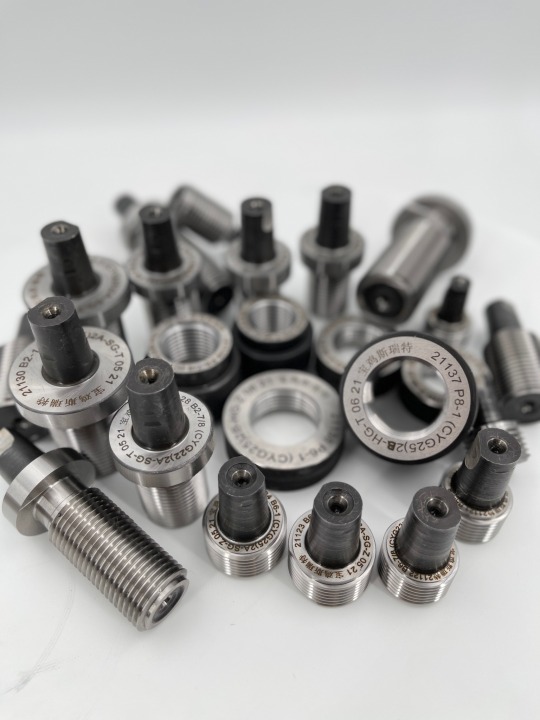


1 note
·
View note
Link
For just $29.00 -14k Rose Gold Fill or 925 Sterling Silver -Thread Style Earrings -18 gauge -Hypoallergenic, Nickel Free -Minimalist earrings, tiny and lightweight, easy to wear all-day -1 1/2" x 1/2" (38 x 12.7 mm) These simple earrings are hand-formed and hammered from your choice of 14k rose gold fill or 925 sterling silver wire. Both metals are hypoallergenic and are nickel free. Also, they can be worn two different ways with the long section in front of the ear or in back. They are 18 gauge which is slightly thicker than average earwires but are comfortable for most earring wearers. The total length is 1 1/2" and the width is 1/2" at it's widest point. ******************************* Each order comes complete with simple care instructions for the extended life of your purchase. Your order is hand-wrapped with care in craft paper wrapping with decorative twine, and is mailed to you in a cushioned envelope via USPS and tracking will be sent to you after it ships. All items ship free domestically with first-class mail and include insurance. LAST MINUTE ORDER? No problem! Shipping upgrades are available for both national and international orders. ********************************************* Thanks for visiting! Check out my About page to learn more about my work: https://www.etsy.com/shop/CatMHorn/about Follow me on Facebook at https://www.facebook.com/cathornaccessory Instagram at: https://instagram.com/cathornaccessory/ If you are interested in receiving email updates about sales or new seasonal lines, sign up for my newsletter here: https://mailchi.mp/3b067296a7d1/be-a-vip
#NickelFree#RoseGold#SilverThreaders#RoseGoldThreader#GiftForHer#hypoallergenic#LightweightEarrings#ThreadEarrings#RoseGoldHoops#RoseGoldThread
8 notes
·
View notes
Text
The Ultimate Guide to API Thread Gauges: Everything You Need to Know
If you work in the oil and gas industry, you are likely familiar with the importance of accurate and reliable thread gauges. In this post, we will dive into the world of API 5B Thread Gauges, specifically focusing on the API 7-1 standard. Let's explore the significance of these thread gauges and how they ensure the integrity of threaded connections used in drilling and production operations.

What are API 5B Thread Gauges?
API 5B Thread Gauges are precision tools used to measure and verify the pitch diameter and thread form of threaded connections in oilfield equipment. These gauges are essential for ensuring the quality and integrity of threaded connections, which are used extensively in oil and gas drilling operations.
Understanding the API 7-1 Standard
The API 7-1 standard sets forth the requirements for rotary drilling equipment, including rotary drill stem elements, thread connections, and gauges. The standard specifies the dimensions, tolerances, and performance criteria for various types of thread connections used in drilling operations.
Thread Types
API 7-1 covers a range of thread types, including:
API Regular Threads: These threads are commonly used in drill pipes, drill collars, and other rotary drill stem elements. They provide reliable and secure connections for drilling purposes.
API Buttress Threads: Buttress threads are ideal for applications that require high torque transmission and resistance to axial loads. They are commonly used in casing and tubing connections.
API Modified Acme Threads: These threads are designed to withstand high tension and compression loads. They find applications in heavy-duty drilling operations.
API Extreme Line Threads: Extreme line threads are used in extreme conditions and require robust connections to withstand harsh environments.

Gauge Design and Function
API 5B Thread Gauges are meticulously designed to ensure accuracy and reliability. They consist of precision-cut threads that match the corresponding thread types and sizes specified in the API 7-1 standard. These thread gauges serve as a reference for checking the acceptability of threads on various oilfield equipment.
The gauges are used by skilled technicians to measure critical parameters such as thread taper, pitch diameter, thread profile, and thread flank angles. By comparing the measured dimensions to the specified tolerances in API 7-1, technicians can identify any defects or deviations that may compromise the integrity of the threaded connections.
The Importance of API 5B Thread Gauges and API 7-1
Threaded connections play a crucial role in oil and gas drilling operations. They must be able to withstand immense pressure, torque, and other mechanical forces often encountered in harsh environments. The use of API 5B Thread Gauges helps ensure that these connections meet the stringent requirements set forth by the API 7-1 standard.
By adhering to API standards and utilizing API 5B Thread Gauges, oil and gas companies can:
Enhance Safety: Accurate and reliable threaded connections minimize the risk of leaks, blowouts, and other hazardous incidents.
Improve Efficiency: Properly threaded connections allow for efficient assembly and disassembly of drilling equipment, reducing downtime and optimizing operational efficiency.
Ensure Compatibility: API 5B Thread Gauges validate the compatibility of threaded connections across different manufacturers, promoting interoperability within the industry.
Maintain Quality: Regular inspection and verification using API 5B Thread Gauges help maintain the quality of threaded connections over time, ensuring long-term reliability.
Conclusion
In conclusion, API 5B Thread Gauges, in accordance with the API 7-1 standard, play a critical role in maintaining the integrity and reliability of threaded connections used in oil and gas drilling operations. By adhering to these standards and utilizing precise thread gauges, companies can ensure safer operations, higher efficiency, and long-lasting quality in their drilling equipment.
0 notes
Text
Monitoring using Sensu, StatsD, Graphite, Grafana & Slack.
At Airwoot, we are in the business of processing & mining real-time social media streams. It is critical for us to track heartbeat of our expansive distributed infrastructure and take timely action to avoid service disruptions.
With this blog post, we would like to share our work so far in creating an infrastructure watchdog and more. We started with following objectives:
Monitor everything under the radar and thereby learn how the system breath.
Use the monitoring framework to collect data and power an internal dashboard for identifying trends.
Alert anything that need attention to appropriate handlers (engineering and client servicing teams).
Let’s dive.
Monitoring Framework
Sensu
Sensu is a feature-packed distributed monitoring framework that executes health checks for applications/services and collects metrics across all connected Sensu clients, which then are relayed to a Sensu server. The checks’ results can be handled differently based on their severity levels. We choose Sensu out of the many monitoring tools available for the following reasons:
ability to write checks and handlers for check failures in any language.
large number of community plugins available and good documentation.
easy horizontal scaling by adding more clients and servers.
it acts as a “monitoring router” that publishes check requests and collects results across all Sensu clients. The results along with their context are directed to custom defined handlers for taking actions based on the criticality of results.
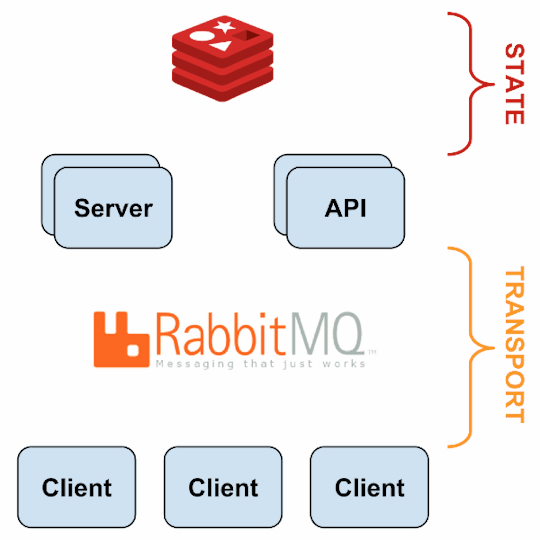
Source: Sensu Documentation - https://sensuapp.org
Sensu has three main components that are executed as daemon processes.
1. sensu-server runs on one or more machines in the cluster and acts as the command center for monitoring. It performs following actions:
schedules periodic checks on clients
aggregates the checks’ results and adds context to them to create events
events can be filtered and passed on to custom defined handlers for taking actions
2. sensu-client can subscribe to group(s) of checks defined on the sensu-server or can have their own standalone checks. sensu-client communicate with the server using the RabbitMQ.
3. sensu-api has a REST interface to Sensu’s data like connected clients, active events, and check results. It also has capabilities to resolve events, remove connected clients, and issue check requests.

Sensu Entities
StatsD
StatsD is a push-based network daemon that allows a statsD client to collect custom metrics and export them to a collecting server. The catch here is that StatsD uses lightweight UDP protocol for relaying metrics to the metric store, so a slow metric receiver shall not affect application’s performance. We used the Python client for statsD to collect application level metrics.
There are three main data types in statsD:
1. Counters are simply time correlated count of events taking place per unit time. There are incr and decr methods for altering the value of a counter. We extensively used counters to track brand-wise documents from social channels like Twitter and Facebook. Here’s a code snippet for tracking mentions of a brand on it’s Twitter handle:
https://gist.github.com/tanaysoni/76a6de3d7ab3e52b2860
These mentions’ metrics can be displayed at arbitrary time aggregations. Here’s how we did in our Grafana dashboard.

Grafana dashboard showing hourly brands’ mentions on Twitter calculated using StatsD counters.
2. Timers collect numbers times or anything that may be a number. StatsD servers then calculate the lower bound, upper bound, 90th percentile, and count of each timer for each period. We used timers to track the time in fetching social media conversation from Facebook and Twitter. Here’s the graph for the task that fetches comments on brands’ Facebook page:
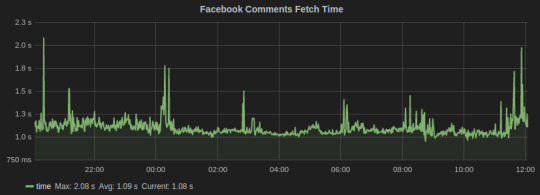
Facebook Comments
3. Gauges are a constant data type that are not subjected to averaging. They will retain their value until changed. We used gauges for computing the delays and queue lengths in our systems.
This is an excellent blog that explains these metrics in detail.
Graphite
Graphite is a database for storing numeric time series data. We use StatsD for collecting metrics, which are then stored in Graphite. There are three software components of Graphite:
1. carbon is a daemon that listens to the time series data. It has a cache that stores values in memory and subsequently flush them to disk at a regular interval. It has configuration files that define the storage schema and aggregation policies for the metrics. It tells whisper the frequency and the history of datapoints to store. We have configured carbon to store most our metrics in a frequency of 10 seconds and for a month’s time. Here’s an example config:
[storm_stats] # name of schema pattern = ^storm_stats.* # regex for matching metric names retentions = 10s:30d # frequency:history for retention
2. whisper is a database library for storing the metrics. The location of whisper files can be set from the carbon-conf file.
3. graphite webapp is the default web-based graphing library provided by graphite, but we used the more powerful Grafana dashboard.
New Relic
Infrastructure monitoring of all EC2 instances including memory, CPU, disks capacity and IO utilization. Many out-of-the-box solutions are available, so we decided not to reinvent the wheel. We have been using New Relic for a while now and it has worked perfectly(well almost!), so decided to stick with it.
New Relic has a quick step-wise guide for setting up. The problem we faced with New Relic is with their “Fullest Disk” alerts which are triggered when disk space of the fullest disk mounted on the machine being monitored is beyond alert thresholds. This fullest disk alert once open prevents alerts for the remaining disk from being triggered.
We solved this problem using Sensu disk check plugin which allows to select the disk(s) to be ignored from the check.
Supervisor
We run all the critical processes on Supervisor. It only has support for processes that are not daemonizing, i.e., they should not detach from the terminal from which they have been started. There are many process control features provided by Supervisor including restart on failures, alerts when set number of restart attempts fails, redirect output of processes to custom log directories, and autostart process on machine reboot.
We have instrumented a Sensu plugin that notifies on Slack if a process crashes. Here’s the code:
https://gist.github.com/tanaysoni/486ef4ad37ea97b98691
Monitoring of Services
Apache Kafka
The official monitoring doc is a good starting point for exploring metrics for monitoring Kafka. We use an open-source plugin released by Airbnb for sending the Kafka metrics to a StatsD server.
We have found the following metrics to be useful that we track,
Request Handler Idle Time, which tells us the average fraction of time request handler threads were idle. It lies in the range of 0-1, and should be ideally less than 0.3.
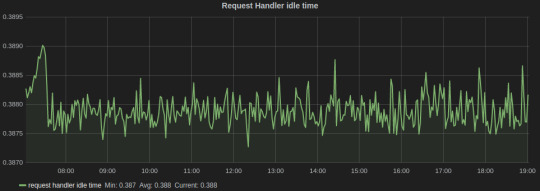
Grafana dash for Kafka
In the above graph, the legends Min, Avg, and Current are added by Grafana. The average value for the entire graph is just under 0.4, which tells us that it’s time to scale our Kafka cluster.
Data/Message Ingestion across all topics helps us to track and comprehend the load on the Kafka servers and how it varies with time.
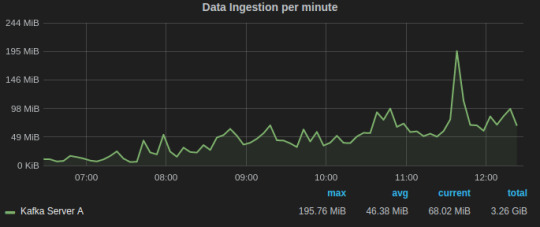
Grafana dash for Kafka request handler idle time
Alerts for Kafka
A Kafka instance runs Zookeeper and Kafka-Server processes. We run them through Supervisor which automatically restarts a process if it crashes and notifies on Slack via Sensu Supervisor check.
Apache Storm
We use Storm to process data that is consumed from Kafka clusters. The command center of our Storm clusters is the Storm UI, which is provided as a daemon process in the official Storm distribution. This blog is a good documentation for Storm UI.
We run all Storm process under Supervisor, which is instrumented with Sensu to alert Slack if any process is not in the running state.
There could be instances when all Storm daemons are running, but the topology might have crashed due to a code-level bug. For this scenario, we have written a Sensu plugin that parses the output of “./storm list” to check if given topology is deployed and activated.
Since, we do stream processing using Storm and Kafka, an important metric is Kafka consumer lag which tells how far is the consumer from the producers. It is essentially the queue length of tuples yet to be consumed by the Storm. There are also Sensu alerts on consumer lag that notifies on Slack if it goes beyond a threshold.
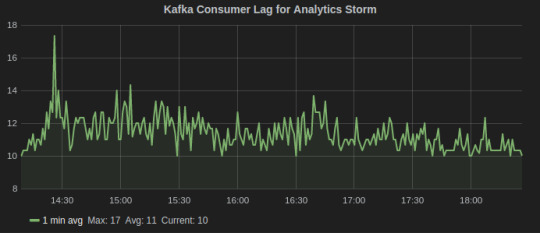
Consumer Lag metric for Kafka-Storm
Gunicorn
Gunicorn comes with a StatsD instrumentation that tracks all the metrics and sends to a StatsD client over UDP. Run Gunicorn with following command line arguments specifying the location of statsD server and an optional prefix to be added to the name of metrics.
gunicorn [ --statsd-prefix sentimentAPI.gunicorn_1] --statsd-host=localhost:8125
We used the following aggregations and transformations in Grafana for the Gunicorn dashboard:
Request status
series sum for all 2xx, 3xx, 4xx, and 5xx response codes
table of avg, current, and total legends help to summarize data for the given time interval
total count of exceptions in the given time range
response time average over one min window
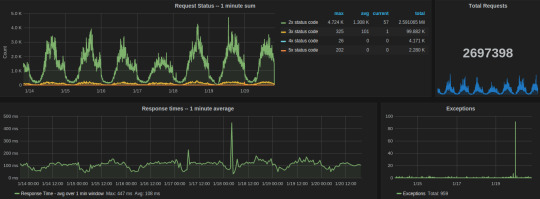
Celery dashboard of last week
MongoDB
MongoDB has in-built set of utilities for reporting real-time statistics on database activities. We leveraged them to built Sensu plugin that periodically parse output from them to sent to a graphite server. These Graphite metrics are graphed on our Grafana MongoDB dashboard.
The two most important utilities are mongostat and mongotop.
mongostat tracks the load on the servers based on database operations by type including insert, update, query, and delete.
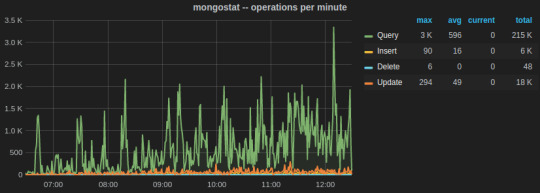
mongotop collect and reports real-time statistics on current read and write activity on a per collection basis. We wrote a Python script to send mongotop metrics to statsD client at an interval of 10 seconds.
https://gist.github.com/tanaysoni/780c4c68447cda8a0a38
Below is a Grafana dash of metrics for a collection graphed over a week time. The peaks and lows corresponds to the business hours, i.e., the reads from the collection were more during the business hours.

Sensu plugins for MongoDB monitoring
Sensu community has metrics and checks for MongoDB.
PostgreSQL
We are primarily tracking the number of connections including active, idle, and idle in transaction on PostgreSQL. For this, we created a Sensu plugin that runs periodically to fetch data from pg_stat table and output as Graphite metrics that are relayed by Sensu. Here’s the code:
https://gist.github.com/tanaysoni/30dabf820c500a58b860
PostgreSQL also provides built-in Postgres statistics collector, whose data can be relayed to a Graphite database using Postgres Sensu plugins.
Celery
Celery is an integral part of our system. Increase in the queue length beyond threshold is a critical state which the team should be informed of.
We have written a Sensu plugin which fetches the queue length of Celery every minute, which is then relayed to GraphiteDB by Sensu. If the queue length is above our warning thresholds, the team is notified on Slack.
Here’s how the Grafana dashboard for Celery looks like.
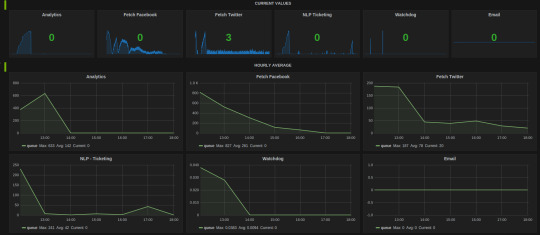
The hourly average summarization in Grafana smooths out the peaks(when bulk tasks get assigned by Celerybeat) to comprehend the load on the Celery cluster. It gives insight as to when to scale the Celery cluster to add more workers.
2 notes
·
View notes
Text
Advantages & Types of Diaphragm Seal

What is Diaphragm Seal?
The diaphragm seal system consists of Pressure Instruments, Fill fluid, and Diaphragm seal direct mounting type or capillary type.
In the process a flexible diaphragm and filling fluid separate the pressure instruments from process media, temperature, or service.
When process pressure acts on the diaphragm, diaphragm displacement transfers the measured pressure through the filling system. This transferred pressure displaces the pressure sensing element of Pressure Instruments.
A diaphragm seal is used to seal and safeguard instruments from the process medium. The flexibility of the seal is as such that, the diaphragm, seals the contents safely at same time permeating the instrument to measure the pressure accurately.
Diaphragm seals are in general use with other devices and instruments including pressure gauges, transmitters and switches. This combination can be used in extreme and harsh environmental conditions. The fact that they can isolate instruments from any kind of toxic and reactive chemical makes them an especially useful device.
Application of Diaphragm Seals
The application range of diaphragm seals is wide. The use of diaphragm seals in pressure gauges is to protect the sensing element from toxic and hazardous chemicals. Diaphragm seals are manufactured for use in extreme conditions, suitable for different industrial processes.
For instance, they are used with pressure gauges that are generally subjected to difficult process environments. They are used to protect the instrument from dangerous and corrosive media. In a way, diaphragm seals are used to enhance the lifetime of any instrument by protecting them against harmful media which can be at high temperature, highly corrosive in nature, vicious, and with highly toxic chemical combinations.
Types of Diaphragm Seals
Diaphragm seals are available for a variety of applications. Based on application, diaphragm seals can be categorized into:
1. Inline Diaphragm Seal
These diaphragm seals are used to permit fluid flow and are inserted inside various connector types. The arrangement of the seals prevents process clogging or the gradual growth of any bacteria in the diaphragm.
2. Threaded Diaphragm Seals
Designed to mount directly on threaded process connections, and threaded diaphragm seals. To work with gauges in switches and transmitters, these seals are connected via flexible and threaded capillaries. They are very small in size and are made to fit in tiny spaces.
3. Diaphragm Seals with Flanges
Flanged diaphragm seals can be clamped between the process and covering flanges or are designed for direct mounting on the process counter flange. These seals are made to be mounted on gauges and transmitters and are offered in all international flange standards, including ASME EN, BS, API, ISO, or JIS. There are flanged diaphragm seals with flushing connections available.
4. Sanitary Diaphragm Seals
Sanitary diaphragm seals are created especially for the food and pharmaceutical industries, where it is important to stop the growth of bacteria. Through the use of threaded or quick clamp couplings, these seals allow for simple cleaning. These seals comply with FDA regulations and prevent the growth of any bacteria.
Advantages of Diaphragm Seals:
Diaphragm seals guarantee that the results produced by the instrument are extremely accurate in addition to providing protection. To extend the life of instruments, diaphragm seals are installed, which over time saves both time and money.
The ability to adapt the mounting of these seals to the application is another key benefit. They are dependable tools that can be used in a variety of applications because they are built to meet industry standards.
Diaphragm seals have developed a reputation as tools that increase device longevity and reduce the cost of replacing a broken device.
Conclusion:
If you're looking for a diaphragm seal, Precision Mass, a reputable diaphragm seal manufacturer, can help. We have a variety of diaphragm seals for every type of application. You can get in touch to get answers to your questions about the diaphragm seal. Get the best diaphragm seal by getting in touch with us right away.
0 notes
Text
Reactjs Latest Version to Bring Lots of New Features
The long-awaited React 18 version has finally arrived. Although the legal launch is still on-going, its firm has finally revealed the baseline version of React 18 and its agenda. Because developers did not appreciate the previous version of React 17, the team tried something different this time and shared the agenda early to gauge user reaction.
According to a poll, the most popular and well-liked framework is Reactjs Development, and it is also superior to ReactNative for developing Web Apps. This article was updated to incorporate the most recent information on React 18 features and the current version.
What exactly is React.JS?
Reactjs is a free, open-source JavaScript library used to provide user settings, notably for single-unit applications.
Reactjs now holds the record for the most honoured frames. As a result, the inventor societies desire to be lifted from the frame, and they are dissatisfied with the previous launch. Discover the Advantages of Reactjs Development.
React 18 will create a boom this time. The firm is using a new method for newbies. They have met with a group of experts, library creators, teachers, and founders in order to accept positions in a performing organisation. Initially, it will be a small committee.
Why is React 18 superior to React 17?
React 17 does not meet the needs of the developer community. The goal was entirely about making it manageable for React to be promoted on their own.
However, keep in mind that because this is a beta release, there may be changes in the final edition. Most of the qualities may route around concurrency after the departure.
That is a fantastic announcement since it will allow the creators to improve the application's speed and regulation. Furthermore, these novel tools and features may be used to fine-tune their implementation.
React 18's major will be:
Several significant and additional accomplishment adjustments
Aspects of recent modernity
Modifications to the server-side supplying region are required.
It's time to go over the four fundamental and key features of React 18 and explain the differences between the two versions.
1. Parallelism
The fundamental premise of React 18 is concurrence. Concurrency is the ability to do numerous tasks at the same time. Let us consider vitality functions in an element when analysing the trial of a typical React application. At that precise moment, an operator can type on the keyboard or click on other React components.
React must handle all procedure phones, hook calls, and event back calls, some of which can duplicate data. If React spends all of its time creating animation structures, accessors will presume the application is locked since it isn't reacting to their inputs.
React, which operates on a single thread, must combine, reorder, and prioritise these occurrences and duties in order to provide accessors with a faultless and integrity event. React internally consumes a "dispatcher," which is in charge of queuing up and delivering these calls to their destination.
Buyers have had no way to modify the requested sequence of these steps since React 18. However, the Transformation API is now granting the buyer some control over this occurrence pattern.
2. Batching automatically
Batching is the process of combining many React state modifications into one to improve performance.
For example, if you have two-state modifications in the same click event, React will always bundle them into one re-release. If you run these codes, you'll see that when related every second, React only does one code render, even if you set the state twice:
Country change code snippet
country change in fetch code snippet
3. SSR (Support for Suspense)
The term SSR stands for Support for Suspense. The following steps occur in a specific React SSR app:
The server collects the relevant data that must be shown on the UI.
The server converts the entire application to HTML and returns it to the consumer in response.
The customer sets up the JavaScript stack (eliminating HTML)
In the last phase, the customer connects the javascript reason to the HTML (identified as hydration).
There is one issue with a certain SSR app: each step must be finished for the entire application before proceeding to the next level.
However, React 18 has begun to address these issues. The suspense> element is used to breakdown the application into minor independent components approved through the points shown above. As a consequence, customers will easily recognise the application topic and begin interacting with it.
4. Transition
Transition API is a fantastic feature that will be available with React 18. It helps customers to identify periodic update situations on large networks. To separate the data and monitor the intake space units, you must understand the sector's relevance in the country.
When a customer categorises a person, we modernise the information quality and use a modern quality to uncover the record and provide the results. It can cause the sheet to be delayed for large-screen modifications while everything supplies, resulting in other intercourses or indexing inactive and indifferent. If your plan isn't too long, your article plan might be intricate and change with each keystroke. There is no specific way to improve theirs there.
In theory, there are two modifications that must take place. The first is a critical modification in which you must change the prominence of the intake area and perhaps some UI surrounding it. The next one, apathy, is a restricted urgent edit to illustrate the situation of the investigation results.
Conclusion
The helpful role of upgrading from React 17 to React 18 will be a consistent experience. So, if you're seeking for a Reactjs Development Company or have any queries regarding React 18, please get in touch with iSyncEvolution Pvt Ltd.
0 notes
Text
Version 455
youtube
windows
zip
exe
macOS
app
linux
tar.gz
I had an ok couple of weeks. Some quality of life is improved, the UI should save sessions a bit quicker, and the database repairs itself more of itself.
Your client may warn you about a missing index on first boot. If it does, that's great--some new repair code is working!
session save
Some users with large sessions (typically around 2-3+ million 'weight') are experiencing severe UI lockups and general lag. This week I deal with part of that problem by greatly reducing the amount of CPU needed to save most sessions. Now pages know if they have been changed since being loaded, and if they have no changes, they can skip a bunch of session save work.
There's nothing you have to do here, but if you have been experiencing 12+ second freezes every few minutes, please let me know how you get on now. I can't promise things will be perfect, but if you have any large and inactive downloader pages, you should notice things running a bit smoother (exiting the program too, should be faster).
There is still a problem of lag and lockups when there are 200+ downloaders in the session. This is a different and unfortunately more severe problem that I have relieved in recent weeks but needs some other large work to completely fix. Best solution for now is to clear out finished downloaders if you can.
misc
Many of the simple system predicates, like height and filesize, now support the '≠' (not equal) operator! This is still in the early stages, but I'd like to add some options of the thumbnail menu so you can say 'find files that (do not) have this file's precise resolution/duration/size' etc...
You can now copy thread subjects to clipboard in the watcher downloader page list!
The advanced file deletion dialog now remembers the last reason you chose!
The network job widget (which shows download progress, you see it on any downloader) now shows the current URL it is working on under its cog menu. You can click it to copy to clipboard. May help to debug some odd network errors etc...
The way data sizes over 1KB are rendered has been overhauled. It should now generally be to three significant figures, so 3.11MB instead of 3.1MB, 12.3GB instead of 12GB. See if you like the change, and if not, try tweaking it to 2sf under the new EXPERIMENTAL option in options->gui.
database repair
tl;dr: Boot checks are better, you don't have to do anything.
I have spent most of my 'cleanup' time this year breaking the client database into smaller modules. These modules are now responsible for their own repair (which happens on boot), and they do much of it in a neater automatic way, using the same set of definitions it uses to initialise on first start to check whether an existing database is missing anything now. Most of my old hardcoded 'oh, you are missing this table' code is now simplified and modularised, works more reliably, and will be much easier to maintain in future.
You may get a popup when you boot saying you are missing one or more indices. There are several legacy reasons why this might be the case, but most often it will be because you once recovered from former hard drive damage and a clone/recover was unable to rescue an index. Whatever the case, these can now be regenerated automatically (they store duplicated data, so can be regenerated 100%), so please let it run. You might even notice PTR processing working faster afterwards.
Many tables can also be regenerated, and some can be completely repopulated. It is now possible (though not a great idea!) to start a client without a client.caches.db or client.mappings.db file and have it recover to a bootable state. Error presentation around this is improved, with instructions on what to do next in the case of critical problems.
I will continue modularising more of the database and fleshing out this repair code to cover more of the schema!
full list
misc:
many of the simple system predicates (width, size, duration, etc..) now support the '≠' (not equal) operator! searches only support one of these at once for now (e.g. you can't say height != 640 AND height != 1080--it'll pick one of these pseudorandomly)
the watcher page list right-click menu now has 'copy subjects', which copies the selected watchers' 'subject' texts to clipboard
the advanced file deletion panel now remembers which reason you last used. it remembers if you selected the 'default' value up top versus specific reason text, and if you enter custom text, it remembers that for next time too
the network job widget now shows the current URL as tooltip over the progress gauge, and under the cog menu, where clicking it copies it to clipboard
the various menu labels across the program should now show ampersand (&) correctly (e.g. in URLs)
the way byte sizes (like 21.7KB or 1.24GB) above 1KB are rendered to strings has been overhauled. they now generally show three significant figures. a new EXPERIMENTAL option in 'gui' options panel lets you change this, but only 2 or 3 are really helpful
if a repository clears the message on your account, you no longer get a popup telling you 'hey, new message from server x: ...'
the new ≠ system preds should be parseable (but be careful, likely buggy) using the client api's new system predicate parser, with '≠', '!=', 'is not', or 'isn't'
cleaned up some old data presentation methods and improved how client specific options are patched in to base hydrus string conversion code
.
ui freezes:
session pages can now detect if they have had no saveable changes since a certain time. they use this ability to skip redundant session save CPU time for pages with no changes since the last session save
for now, since the smallest atom of the session system is a whole page, gallery and watcher pages can only save time if _every_ downloader in the page has had no changes, so in their case this optimisation mostly only applies to completely finished/paused pages. it is still better to have several medium size downloader pages than one gigantic one
a new database maintenance task ensures that optimisation cannot accidentally lose a page (from something like an unfortunate timing of a session save after many manual session deletes)
the existing optimisation that skips 'last session' save on no changes now initialises its data as the 'last session' is first loaded (rather than on first save), meaning that if there are no changes while the client is open, no new 'last session's will be saved at all
misc session save code cleanup
.
database repair, mostly boring:
a client can now boot with client.caches.db missing and will rebuild that file. almost all of its tables are now able to automatically repopulate (issue #975)
all the new modules I have been working on are now responsible for their own repair. this includes missing indices, missing tables, and table repopulation where possible. modules now know which of their tables are critical to a boot, what version each table and index was added, and now manage both initial and later-created service tables and indices
essentially, all newer database repair code is now modularised rather than hardcoded. the repair and creation code actually now share the same table and index definitions. the code is more reliable, checkpoints its good work in case of later failure, and will be much easier to maintain and expand in future
lots of module repair and initialisation code is refactored and generally given a full pass
the core mappings cache regeneration routine now takes transaction checkpoints throughout its job to save progress and reduce journal size
master definition critical error detection code is no longer hardcoded!
mapping storage repair code is no longer hardcoded!
similar files repair code is no longer hardcoded!
parent or sibling cache repair repopulation is no longer hardcoded!
the local hashes cache module can now repopulate itself during repair
the notes fast search table can now repopulate itself during repair
the similar files search tree table can now rebuild itself during repair
next week
I'm not really happy with my productivity over the past two weeks. This repair and session save worked bogged me down a bit, but I also didn't get as many hours in as I had planned. In any case, I will try to prioritise smaller bug fixes next week. Keep on pushing.
0 notes
Text
API 7-2 Thread Gauge - Northern Gauge
Northern Gauge manufactures API 7-2 REG, NC, I.F., F.H, PAC, HEF, MT/AMT, X.H, H90, AOH, SLH90, Wilson Flush WF, plug and ring gages All working gages are manufactured in full compliance to API 7-2 thread Gauge and fully traceable to API reference masters. Groove diameter gauge Northern Gauge offers Groove diameter gauge and groove standards for setting up the inspection of Ring Grooves. Contact [email protected] for more information.
Item
Description
BX-1000
BX-1000 6A GROOVE DIAMETER GAGE (RANGE 2.6"-13")
BX-EXT-26
BX1000 EXTENSION ROD 2.6"TO 26"
BX-EXT-36
BX1000 EXTENSION ROD 2.6"TO 36"
BX150BX161
BX150-BX161 SETTING GROOVE MASTER GAUGE
BX162BX303
BX162-BX303 SETTING GROOVE MASTER GAUGE
USA CONTACT DETAILS Website - https://northerngauge.com/ Location - 202 Tideland Road, Broussard, Louisiana USA 70518 Email ID - [email protected] Contact Number - 337-426-1992 Toll Free: 1-855-449-4935 (Canada & USA)
0 notes